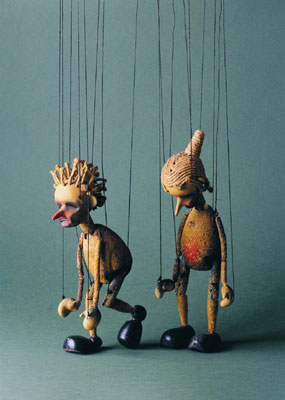

Window.FB.Event.subscribe('xfbml.render', function() (document, 'script', 'facebook-jssdk')) UNIMA centers have since been created in several parts of the world. This organization was made to spark a resurgence of puppetry and help puppeteers show off their art form and connect with other like-minded artists. In 1929, the Union Internationale de la Marionnette (UNIMA), or International Puppetry Association, was established in Prague. This show became very popular among the masses and was performed with various alterations till the 19th century. In the 16th century, the traditional British “Punch and Judy” puppetry originated from the Italian commedia dell’arte (an earlier theatre form).

During this period, figures of wood operated by string by humans to demonstrate the actions such as kneading bread. The Puppeteers of America and UNIMA-USA sponsored the World Puppet Festival in Washington DC with Nancy Staub as director. There is also archaeological evidence of puppets in Egypt in 2000 B.C. These Greek plays had puppetry shows performed in front of the common people and European puppetry was inspired by this. In ancient Greece, old written records found in the works of Herodotus and Xenophon state that puppetry was in practice since the 5th century B.C. China, Japan, and Taiwan also had their versions of puppetry. Many Indian Classical texts like the “Ramayana” and “Mahabharata” also mention puppets. Archaeologists had found a terracotta doll with a detachable head capable of being manipulated by a string. In India, the origin of puppetry was traced back to the Indus Valley Civilization in 2500 B.C. Even before putting actual people on stage, these inanimate actors were doing a great job of entertaining a wide range of audiences from different parts of the world. A space overflowing with craft supplies - which, in this case, are the unexpected building blocks of political protest.Historians claim that puppets were born before theatre actors. “It’s really useful now when we are talking about women’s rights and the laws affecting women’s bodies,” Christensen says.Īs we leave the storage space, Hennessey and Christensen walk me out through the puppetry studio. It represents the female anatomy and was used about a decade ago in a puppet show about home birth. Christensen points to a quilt slung over a rack in the corner of the room - on which a cardboard speech bubble reads “No Paws, No Laws.” Squallis will also bring out some old puppets and use them in new ways. Both, Christensen says, conjure images of inclusivity (Einstein was both a scientist and immigrant) and critical thinking. They finally decided on two, Lady Liberty and Albert Einstein, who will be debuting in the spring. “Which historical figures would you like to see as puppets at rallies and marches?”Īccording to Hennessey, this post generated more engagement than any in the past the answers ranged from Susan B. Shortly after the Women’s March, Squallis posted a question on social media: “I really feel committed to that as Squallis - to be affecting that.” He trails off, while Christensen, Squallis’ executive director and founding member, picks up: “We wanted to contribute our puppets and our artform to the visual landscape to protest in Louisville,” she says. “We’re really worried and upset about what is happening to our country and we have these giants puppets…” I mean, we are feeling very strongly about what is going on,” Hennessey, the company’s director of development and marketing, says.

“Well, I mean we couldn’t not come to the rally. Two weeks ago, Abe, accompanied by a George Washington puppet, made an appearance at the Louisville Women’s March. At every turn, we are surrounded by felt, feathers and massive paper mache masks - like the one belonging to a solemn 9-foot-tall Abraham Lincoln backpack puppet propped in front of me. Shawn Hennessy and Nora Christensen lead me through the Squallis Puppeteers’ storage rooms on the attic-level of Highland Community Ministries.


 0 kommentar(er)
0 kommentar(er)
